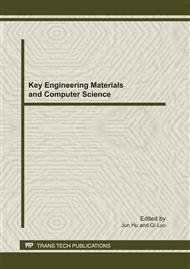p.26
p.33
p.38
p.45
p.52
p.58
p.64
p.69
p.75
Effects of Interlaminal Contaminants on Mechanical Properties of Composite Laminates
Abstract:
In this paper, the influence of interlaminal contaminations of water, oil and paper on the mechanical properties of carbon fiber reinforced epoxy composite laminates was researched. The results showed that the existence of interlaminal layered contaminations greatly degraded the mechanical properties of composite laminates. The deterioration of mechanical properties resulted from oil contamination was most serious. It was concluded that the ultimate tensile strength (UTS), compression strength and ILSS were more seriously influenced than corresponding modules. How those contaminations affected the mechanical properties was discussed. For further understanding of the effecting mechanism of water contamination on the curing kinetics, the DSC curves of prepregs contaminated by water were compared with that of normal prepregs. It was found that the initial curing temperature of specimens with water contaminant was lower than that of control prepregs.
Info:
Periodical:
Pages:
52-57
Citation:
Online since:
August 2011
Authors:
Keywords:
Price:
Сopyright:
© 2011 Trans Tech Publications Ltd. All Rights Reserved
Share:
Citation:


